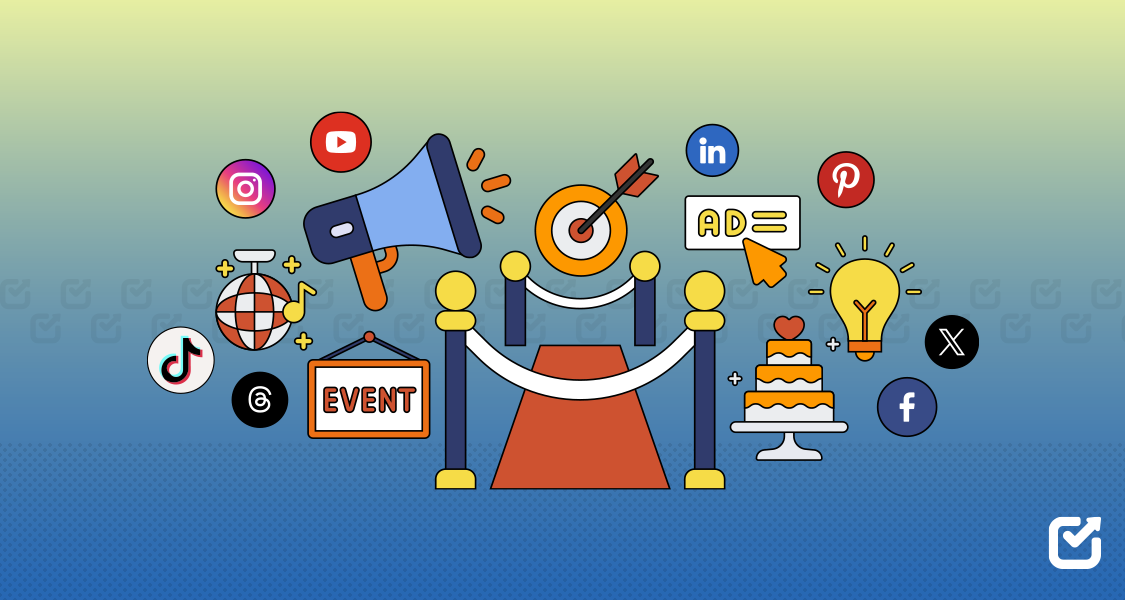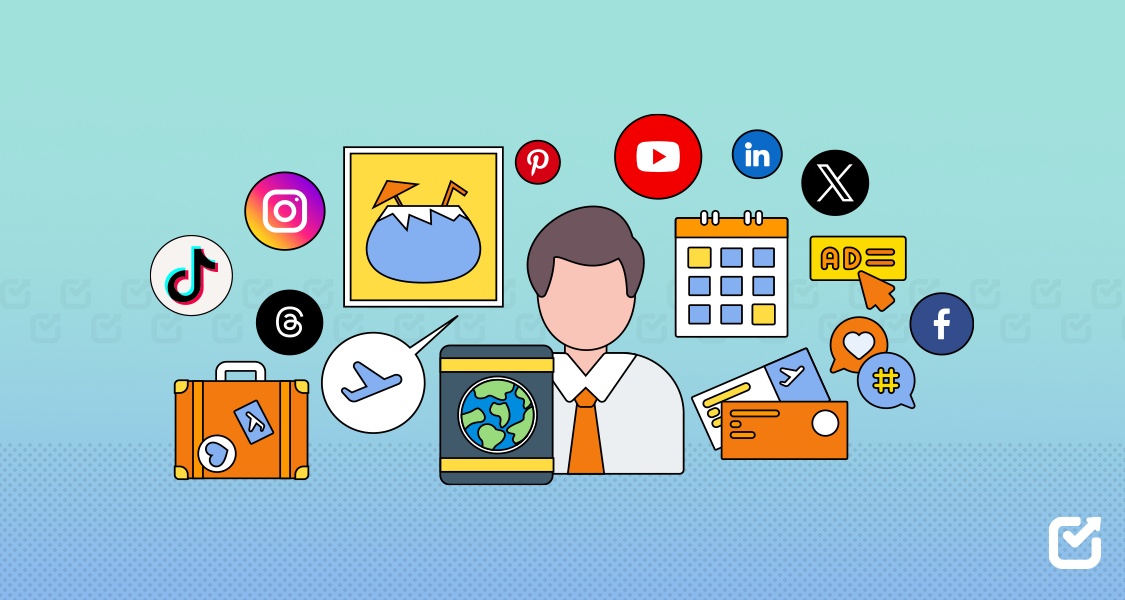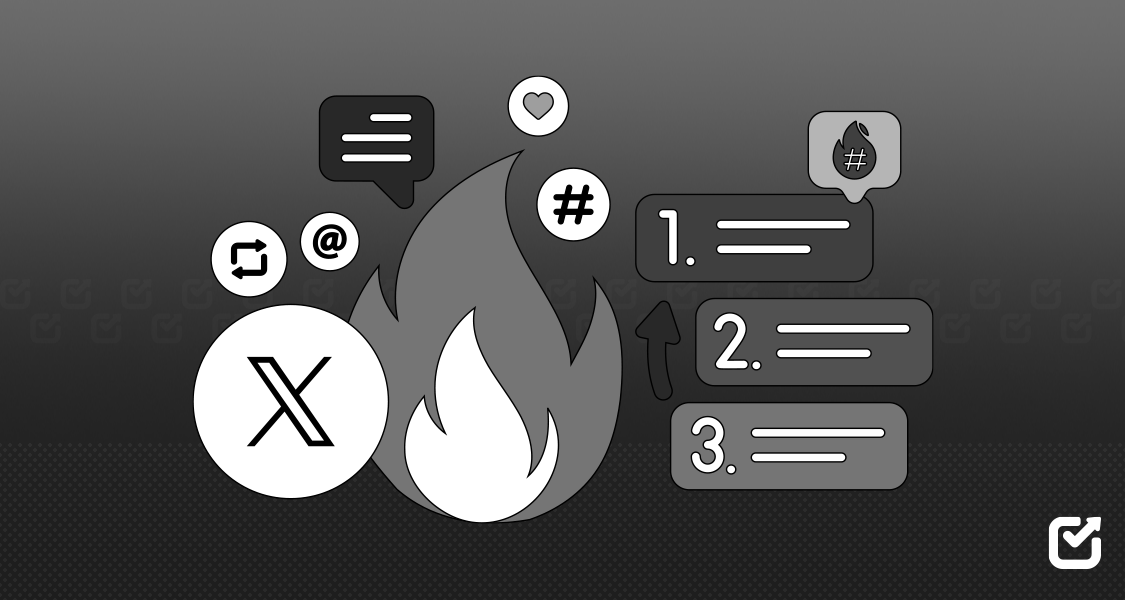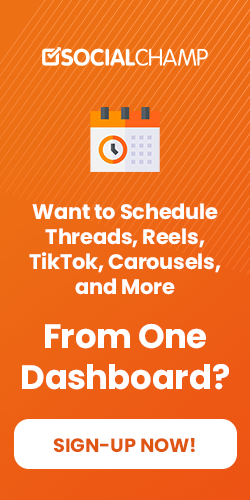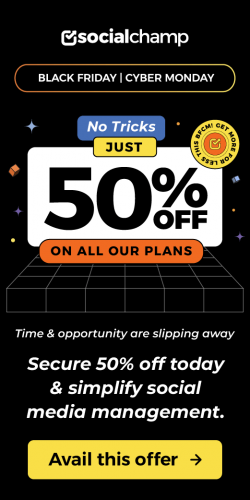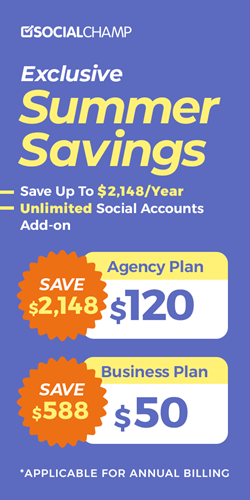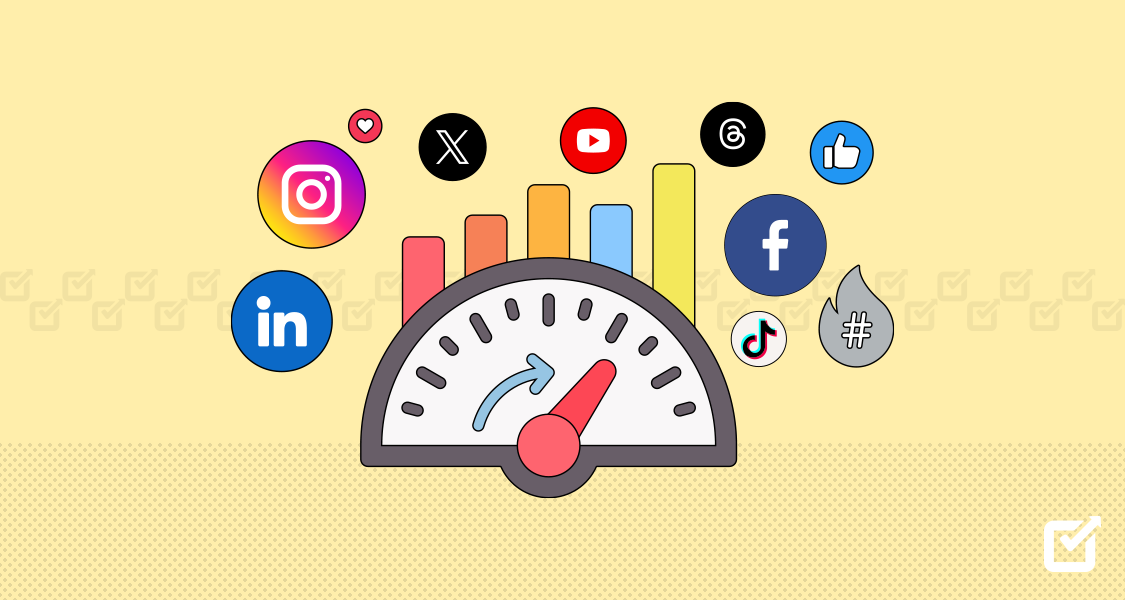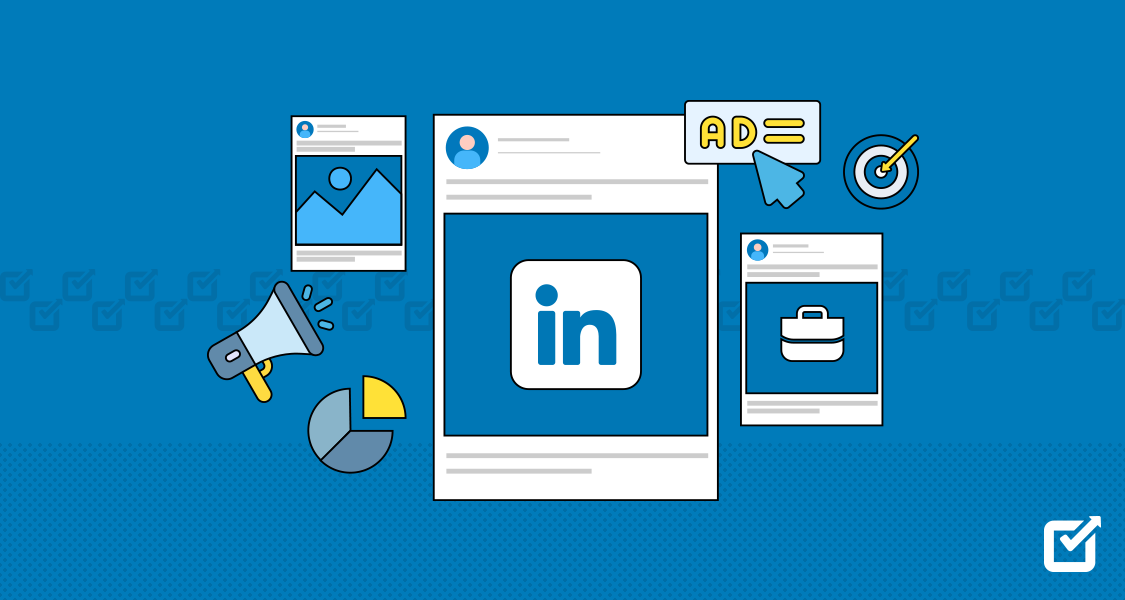Planning an event is hard enough, but getting people to show up?
That’s a whole different ball game.
Today, social media marketing for events isn’t an optional add-on; it’s a must-have.
Whether you’re hosting a conference, a product release, or a neighborhood gathering, the way you promote your event online can either make or break it.
In fact, 80% of Gen Z believe that social media posts provide them with the best event recommendations.
That is to say, if your event isn’t receiving the social media buzz it should, then you’re probably losing out on potential attendees.
But don’t worry—there’s still time to turn things around!
How can you get people buzzing about your event? How can you make sure your posts reach the right audience and keep them engaged?
In this article, we’ll break down the top strategies to leverage social media to drive engagement, fill seats, and generate buzz that lasts.
Let’s get started!
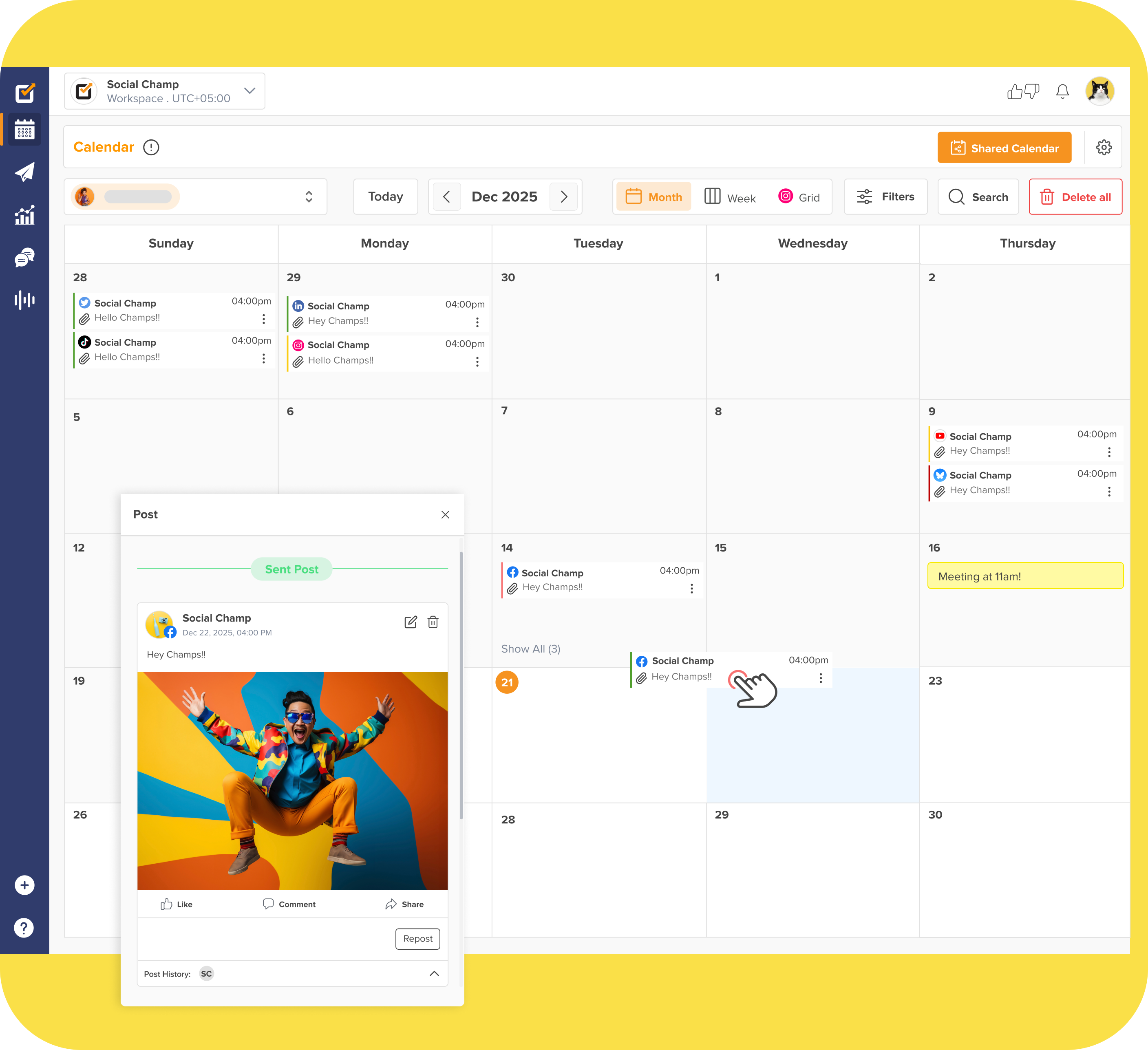
Increase Engagement, Fill Seats—All With Social Champ!
Develop an organized social media campaign for your next event. From scheduling posts to tracking analytics, everything you need is at your fingertips!
Short Summary
- Social media is vital for event marketing, providing extensive reach and engagement.
- Social media platforms such as Facebook, Instagram, and LinkedIn enhance event visibility.
- Hashtags, polls, and live streaming help create engagement and foster a sense of community.
- Social media provides real-time updates and interaction with attendees.
- Social media targeting is accurate, enabling the right audience to be reached.
- A pre-event strategy generates excitement with event pages, teasers, and early-bird deals.
- Live updates, streaming, and interactive polls maximize engagement while the event happens.
- Post-event posts, such as highlights and testimonials, maintain the momentum.
Why Social Media Marketing Is Essential for Events
Social media event marketing has become one of the most powerful marketing tools for event planners.
If you’re hosting an event and aren’t leveraging social media in your event marketing, you’re missing out on a significant opportunity.
Here’s why social media is an event game-changer:
-
Increased Visibility
Social media sites offer an enormous network through which you can target potential attendees who may not otherwise be aware of your event.
With billions of active users on sites like Facebook, Instagram, X, and LinkedIn, your event receives unprecedented exposure.
Considering this, if you use strategically placed updates and ads, your event can gain fast notice from the right people.
-
Enhanced Engagement
When you use social media to promote an event, you provide several avenues of interaction with your audience.
For instance, hashtags for events, polls, and live streaming keep guests entertained.
And because social media is interactive, your audience can pose questions, provide feedback, and share the event with others, building buzz on the spot.
-
Real-Time Updates and Interaction
Social media provides the opportunity to update information in real-time.
No matter if it is announcing a guest speaker, disseminating event information, or letting people know if tickets are still available, your audience is up to speed and involved.
The ongoing communication strengthens the bond between you and your audience.
-
Targeted Marketing
With precise analytics and ad targeting capabilities, social media sites enable you to target the very audience most likely to attend your event.
You can design tailored campaigns by age, interests, and location, so you know you’re reaching the right people without throwing money away.
-
Cost-Effective Promotion
Compared to traditional forms of advertising, social media marketing for events is significantly more affordable.
You don’t need a large budget to start reaching a massive audience.
Whether you’re promoting through organic posts or paid ads, social media provides flexibility to scale your campaigns according to your needs and budget.
-
Building FOMO (Fear of Missing Out)
An effectively carried out social media event promotion can create a buzz and a sense of urgency.
As your attendees post about, review, and share behind-the-scenes about the event, the fear of missing out on something so cool grows.
It inspires others to register and join in, resulting in increased attendance for you.
Featured Article: Social Media Marketing for Fashion Brands in 2025
Crafting a Pre-Event Social Media Strategy
If you want your event to create a buzz, sell out tickets, and have tongues wagging even before it begins, you must have a robust pre-event social media strategy.
This stage is all about generating hype, engaging your audience, and keeping your event at the forefront of their minds.
Here’s the right way to do it:
-
Set Up a Dedicated Event Page
Develop a Facebook Event or landing page that contains all the necessary information—date, time, location, and how to sign up.
This is your one-stop information center for updates and sharing.
AdEspresso reports that 700 million people use Facebook Events each month, and 35 million people view a public event on Facebook daily.
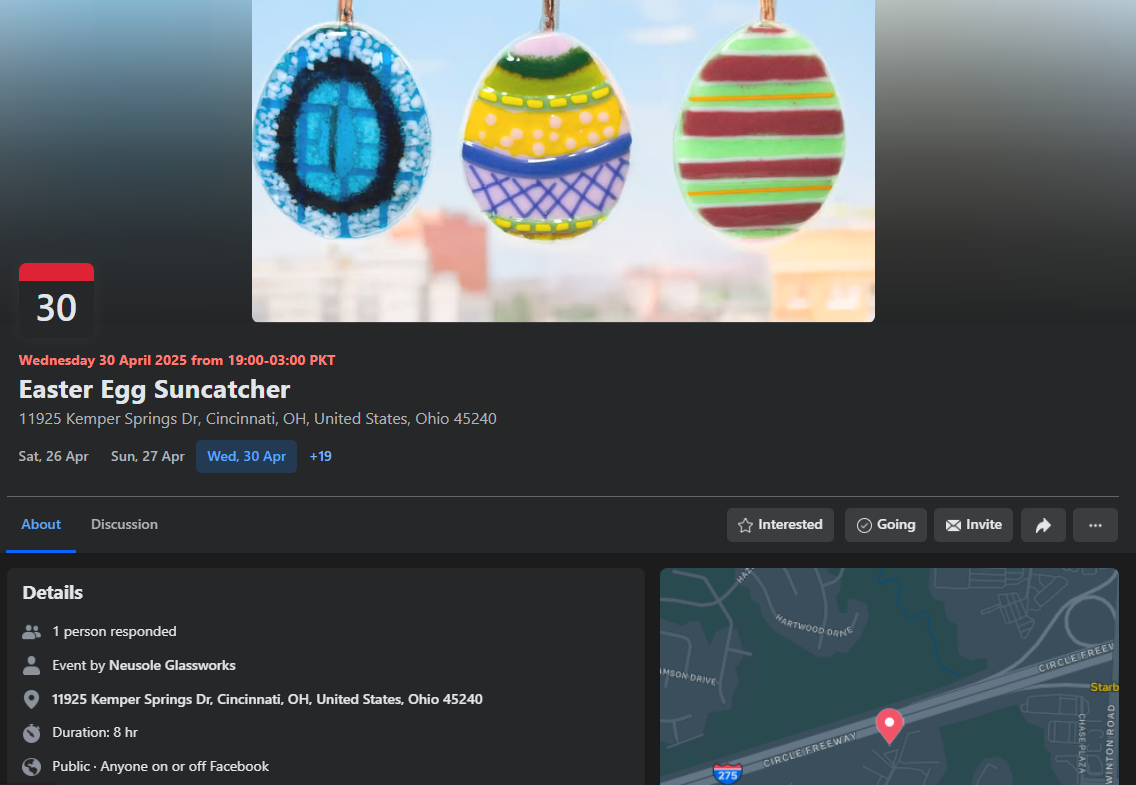
A Facebook Event of Easter Egg Suncatcher -
Post Teaser Content Regularly
Start sharing sneak peeks: speaker spotlights, behind-the-scenes footage, and countdowns.
Provide your audience with reasons to keep visiting and get stoked about what’s to come.
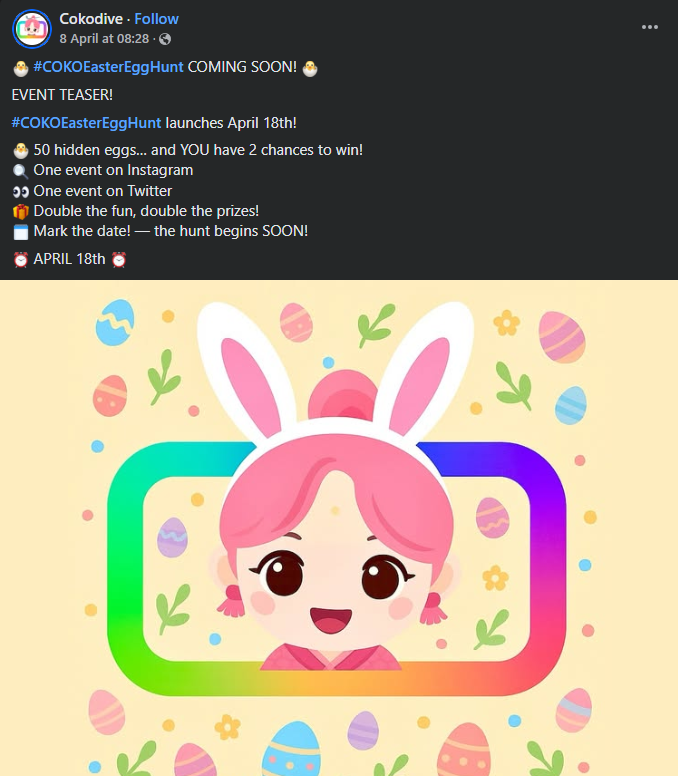
Cokodive’s Sharing Teaser of COKO Easter Egg Hunt Event -
Create and Promote a Branded Hashtag
Utilize a short and memorable hashtag for your event and use it across all your posts.
Invite your audience and collaborators to use it as well—it creates a community around your event and makes it easier to monitor content.
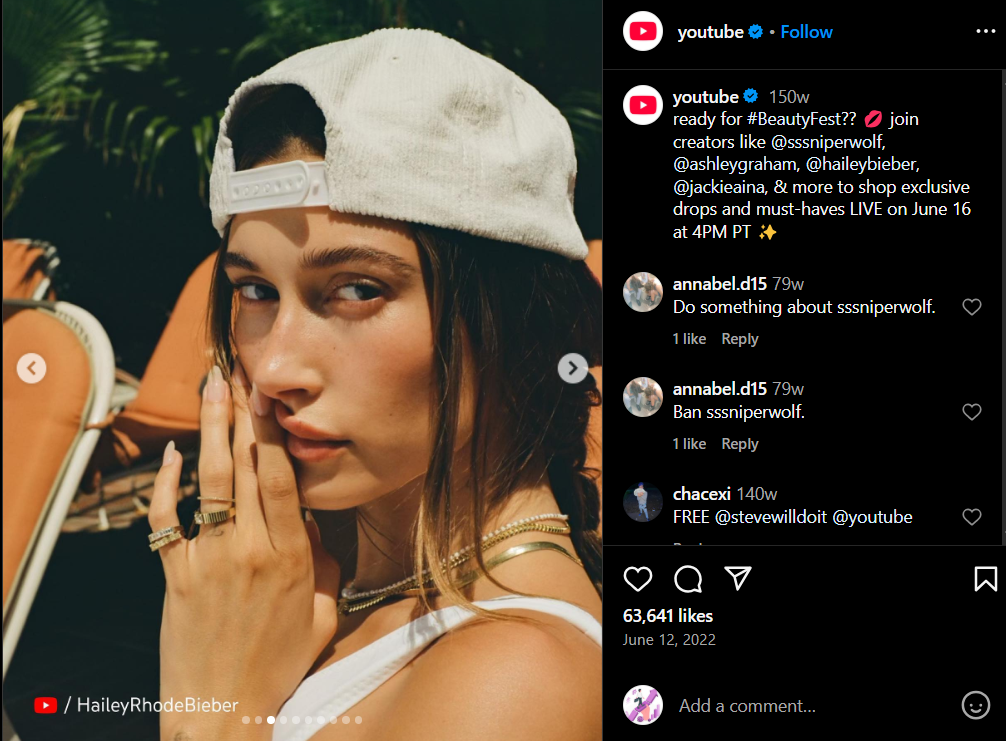
YouTube’s Beauty Fest Branded Hashtag #BeautyFest -
Offer Early Bird Perks or Giveaways
Make it urgent by providing limited-time discounts or special giveaways to early followers and registrants.
These little rewards can turn interest into action in a snap.
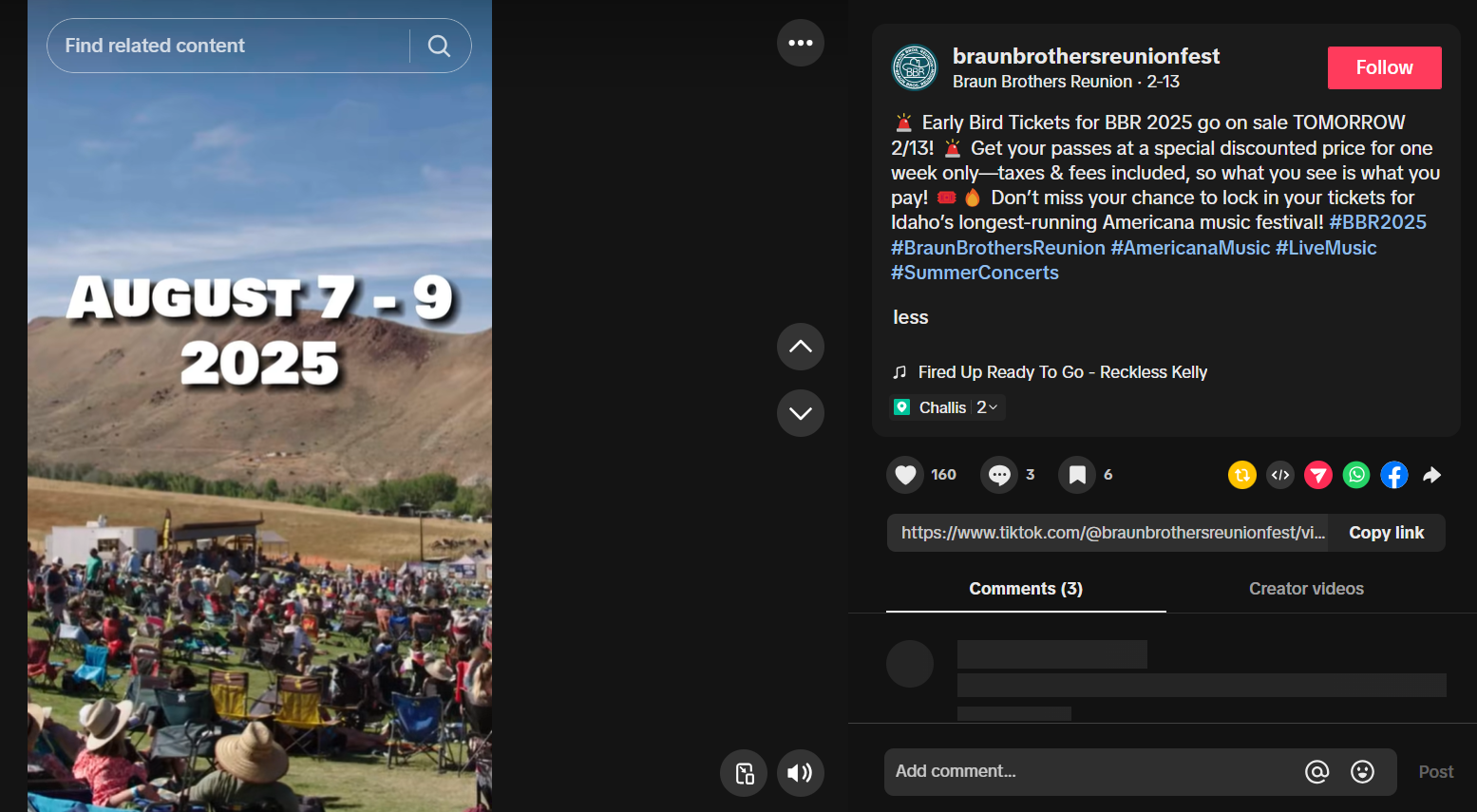
Braun Brothers Reunion Giving Discount on BBR 2025’s Early Bird Tickets -
Collaborate With Speakers and Sponsors
Encourage your speakers, performers, and sponsors to promote the event on their own social media channels.
This widens your reach and lends credibility by leveraging audiences who already trust them.
Executing Real-Time Social Media Campaigns During the Event
Your event day isn’t the day to go silent—it’s your day to go big.
Live content maintains the excitement, gets people involved in the moment, and makes those who couldn’t attend feel like they’re included.
This is where social media campaigns for events can really shine.
Here are smart strategies to increase live engagement at your event:
-
Go Live and Stream Key Moments
Whether it’s a keynote speech, panel discussion, or behind-the-scenes look, live streaming provides your audience with direct access to the experience.
It also enables virtual attendees to feel part of it and provides you with reusable content for post-event marketing.
-
Share Real-Time Updates
Keep your audience informed with real-time posts, stories, and tweets.
Share what’s happening now, what’s next, and give bite-sized takeaways or speaker quotes.
These updates create an immediate sense of relevance.
-
Use Interactive Polls and Q&As
Surveys, quizzes, and Q&As in real-time are excellent participation boosters.
You can pose questions or ask opinions using Instagram Stories, LinkedIn, or X.
It engages passive viewers and turns them into active participants.
-
Highlight Attendee Posts With Your Event Hashtag
Get the attendees to post using your event hashtag and then re-share their posts.
It provides social confirmation that your event is happening and is well-attended, and inspires more people to join the conversation.
-
Feature Behind-The-Scenes Content
Reveal the human face of your event—your team working, off-the-cuff moments, prep for speakers, or even bloopers.
These make your content more personable and enable people to connect with your brand on a personal level.
By staying active and engaging during your event, you’re not just capturing the moment—you’re amplifying it.
Social media event promotion during the event can be the difference between a one-time experience and a lasting impression.
Post-Event Social Media Tactics to Maintain Momentum
Just because the event is over doesn’t mean the engagement should stop.
In fact, this is when many brands lose precious momentum.
Successful social media marketing for events doesn’t die when the lights dim—it adapts.
Keeping the conversation going after the event keeps your brand top of mind, fosters relationships, and generates buzz for next time.
Here’s how to ensure your event marketing social media campaign doesn’t fizzle after the event.
-
Share Meaningful Highlights
Everyone wants to relive the highlights—or catch up on what they missed.
Post highlights that are not only engaging but also intentional.
These serve as both a reminder for those who attended and proof for those who may participate in the future.
What to Post:
- Brief recap videos with audience energy and main points.
- Inspiring speaker quotes made into graphics.
- Behind-the-scenes images that reveal personality.
- Attendee selfies, tags, and reactions.
These kinds of posts keep the life of your content renewed and let your audience know that the event wasn’t just a flash in the pan—it was something worth attending.
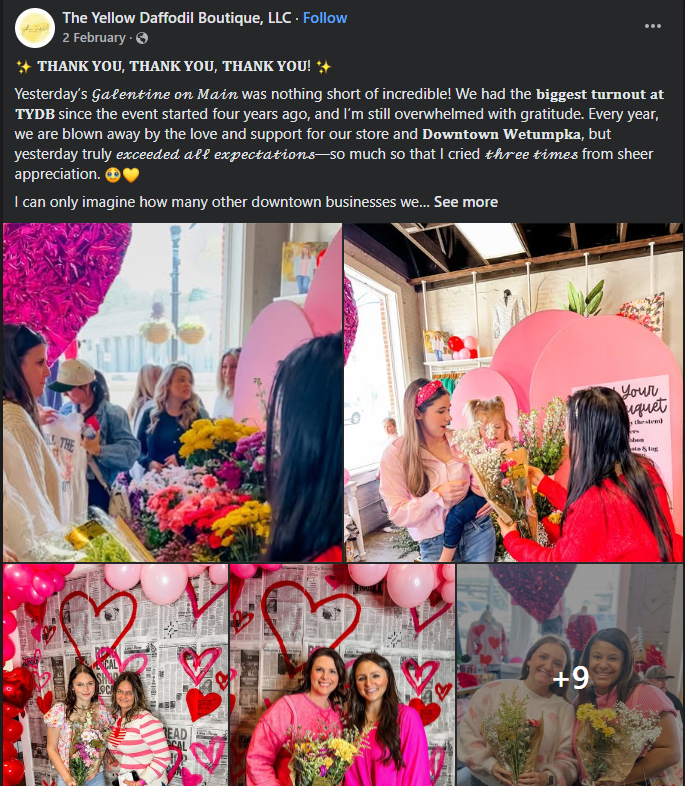
A Boutique Sharing Post-Event Highlights of Galentine on Main -
Feature Real Testimonials
There’s no better time to gather feedback than when people are still abuzz.
Real testimonials create credibility and let you market future events with evidence that people gained real value.
Ways to Share:
- Video footage from participants or speakers speaking from experience.
- Quotes pulled from social comments or post-event surveys.
- Republished user-generated content (with permission).
Make it visual. Make it tangible. The more authentic and timely these appear, the more convincing they’ll be.
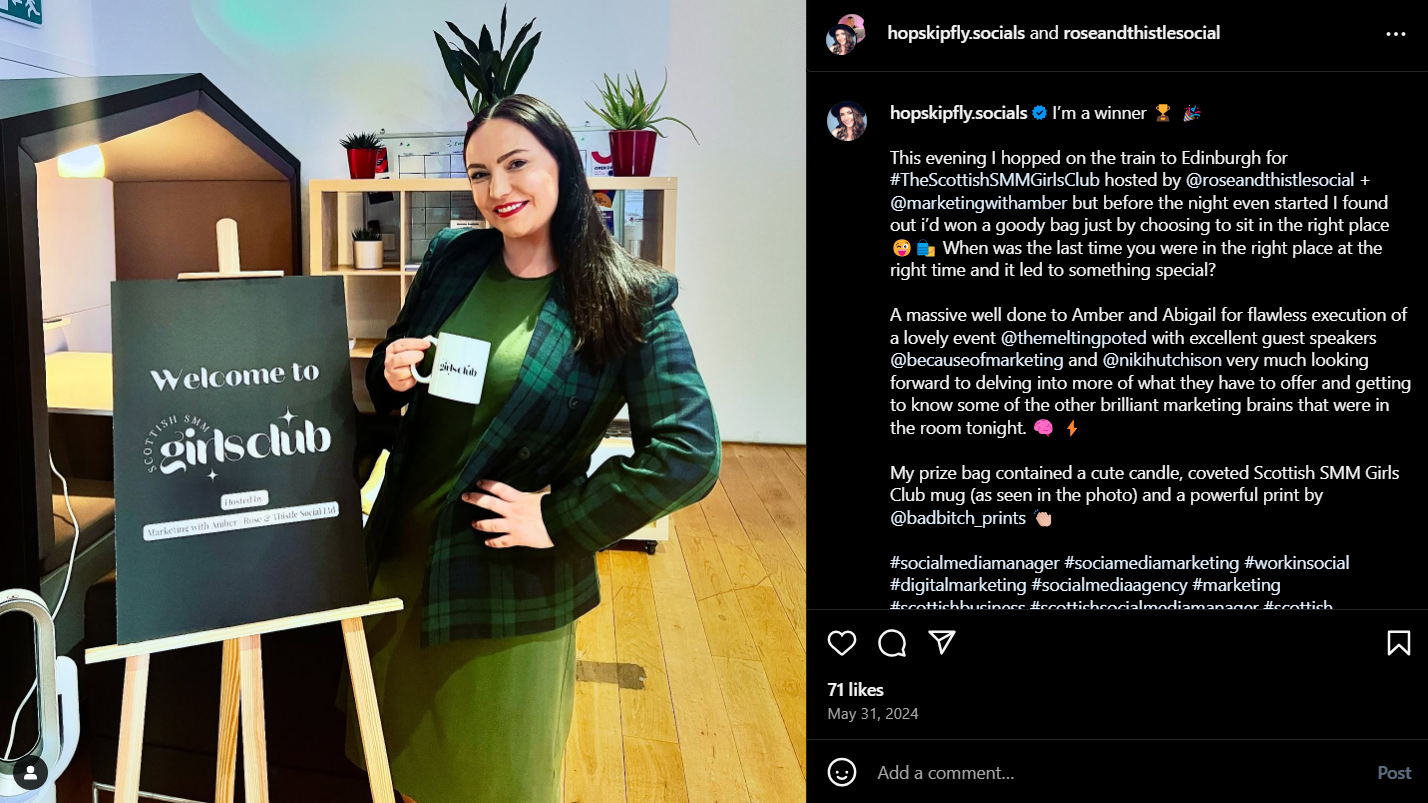
A Post-Event User-Generated Post on Instagram -
Repurpose Your Event Content
You already put in the hard work—now stretch your content further.
Smart social media and event marketing teams know how to break big pieces into smaller, valuable ones.
Try this:
- Turn a keynote into a mini-series of short posts or blog entries.
- Use Q&A sessions for carousel posts or short Reels.
- Create tip-style posts from panel discussions.
- Pull stats or data from your event to build infographics.
This keeps your feed fresh without demanding new content from scratch—a win for your team and your audience.
-
Schedule Your Follow-Ups Regularly
Consistency builds credibility.
However, when you have multiple channels and tight deadlines, it’s easy to let things slip through the cracks.
That’s where Social Champ is a game-changer.
Rather than rushing to post content by hand, use scheduling to:
- Space out highlights, testimonials, and repurposed content.
- Keep your feed active for weeks after the event.
- Maintain brand visibility while planning your next campaign.
This is especially useful for ongoing social media campaigns for events, where timing and rhythm make all the difference.
-
Always Include a Next Step
Don’t just celebrate—guide.
Every post-event piece should include a simple, clear action.
This keeps people engaged and moves them closer to your next event or offer.
Examples:
- “Get updates on our next event.”
- “View the full replay now.”
- “Get early-bird tickets before they sell out.”
- “Follow us for more behind-the-scenes fun.”
When audiences feel connected and engaged, they’re far more likely to return—and bring their friends along.
Featured Article: Proven Dentist Marketing Strategies to Attract More Patients in 2025
Measuring the Success of Your Social Media Event Marketing
Once your event is over, it’s time to measure how successful your social media marketing for events actually was.
You can do this by monitoring key metrics that help you understand what worked, what didn’t, and how you can improve next time.
These are the most important ways to measure the success of your event marketing:
-
Track Engagement Metrics
Track likes, comments, shares, and total interaction with your posts.
Low engagement indicates your content failed to click with your audience.
Pay attention to the engagement rate to see how vigorously your followers engaged with your posts.
-
Monitor Hashtag Performance
Hashtags are an effective way to measure event buzz.
Monitor how many times your branded hashtag was tweeted, reached, and the overall visibility it had.
It helps you determine the online momentum your event generated.
-
Analyze Website Traffic and Conversions
Monitor how many social media visitors viewed your event page.
Utilize tools like Google Analytics to track referral traffic and conversion rates, specifically the number of visitors who actually register for the event.
-
Measure Paid Ad Performance
If you’re running paid advertisements to promote your event, review key statistics such as click-through rate (CTR), cost per click (CPC), and return on ad spend (ROAS).
This will enable you to determine the effectiveness of your ads and whether they resulted in event registrations or ticket purchases.
-
Collect Post-Event Feedback
Ask attendees for feedback via surveys or social media polls.
This will give you direct insights into what they liked, what they didn’t, and what they expect from future events.
Use this data to improve your next social media and event marketing strategy.
By tracking these KPIs, you can measure the impact of your social media campaigns for events and optimize your strategies for future events.
How to Simplify Event Social Media Management With Social Champ
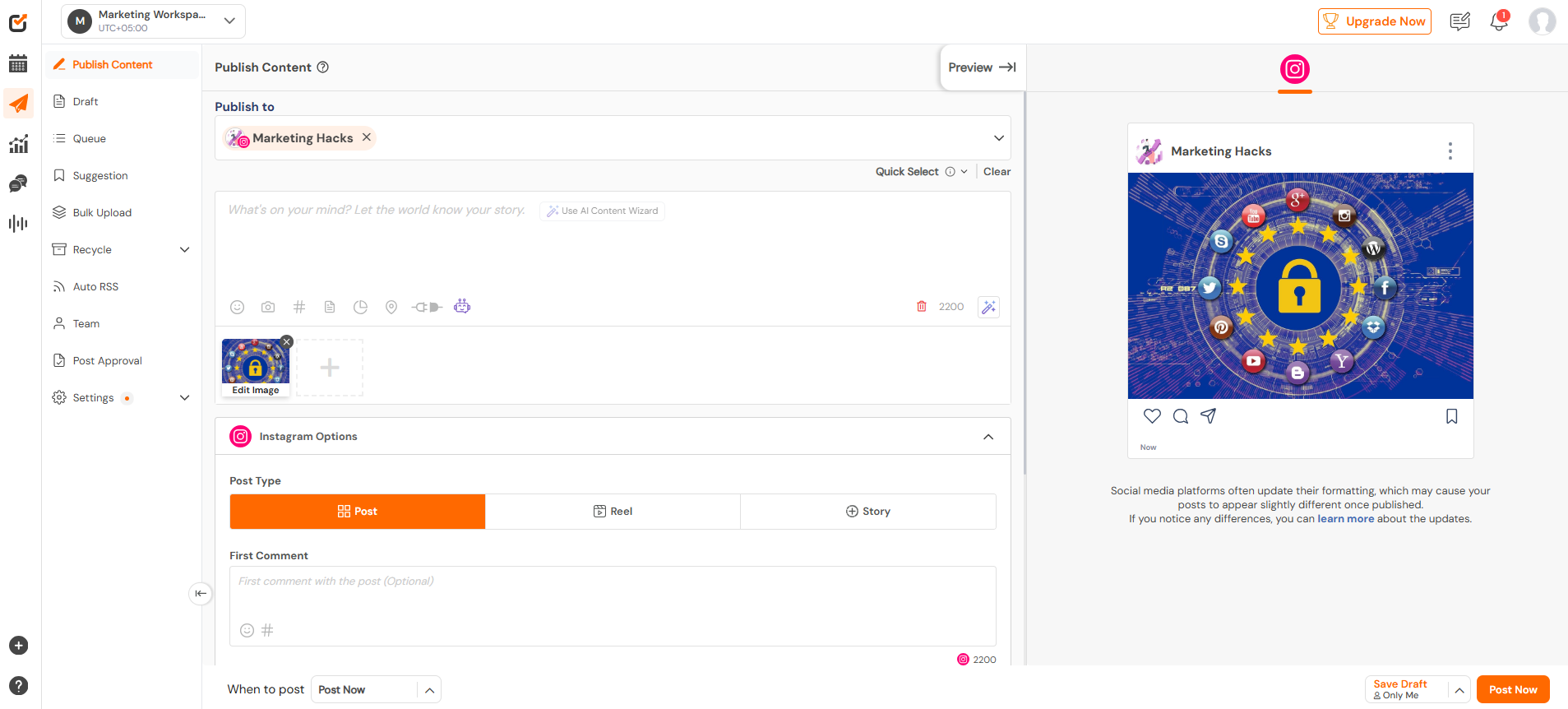
Social media management for an event can be overwhelming, particularly when you have to manage multiple platforms, posts, and live engagement.
Social Champ is where it comes in to make the whole process easy and hassle-free.
Whether it is a small gathering or a major conference, Social Champ can be your lifesaver for social media marketing for events.
Here’s how Social Champ can take your social media events strategy to the next level:
-
Schedule Posts in Advance
With Social Champ, you can schedule and plan all your event-related posts on various networks.
This way, your content is posted consistently at optimal times, even when you’re not available to do it yourself due to event logistics.
Through scheduling posts, you can devote less attention to manual posting and more to organizing your event.
-
Monitor Real-Time Engagement
Throughout the event, it is essential to be on top of social media interactions.
Social Champ enables you to track mentions, comments, and messages in real-time.
This helps you respond quickly and interact with your audience at crucial moments, driving attendee satisfaction and enthusiasm.
-
Analyze Performance Effortlessly
Once the event is over, Social Champ’s analytics tool helps you monitor the performance of your posts and campaigns.
You can measure the rate of engagement, clicks, shares, and overall reach, providing you with valuable insights on how to market an event more effectively in the future.
-
Repurpose Content for Maximum Reach
Social Champ makes it simple to reuse great content from the event.
Publish highlights, quotes from speakers, and reactions of attendees days or weeks after the event, continuing the buzz long after the event doors have closed.
With Social Champ as the social media management tool for your event, you simplify the process, save time, and ensure consistent, effective messaging.
From social media event promotion to ongoing management, Social Champ is the solution that helps you elevate your event marketing and ensure your next event’s success.

Make Your Event Promotion Effortless With Social Champ!
Save time and energy while boosting your event’s visibility. Schedule posts in advance, track performance, and engage with your audience in real-time.
Conclusion
Today, social media marketing for events is no longer a choice—it’s a necessity.
Leveraging platforms such as Facebook, Instagram, and X strategically can significantly boost the visibility, engagement, and overall success of your event.
From pre-event hype to live interaction during the event, and post-event reminders, social media is the platform that keeps the conversation going, making your event remembered.
Whether you want to entertain your audience with real-time updates or establish a long-term connection through valuable content, social media is an accessible solution.
And when you pair these strategies with tools like Social Champ, you can optimize scheduling, increase engagement, and track your performance with ease.
Don’t miss the incredible social media potential—use it to drive attendance, build unforgettable experiences, and make your next event a huge success.
